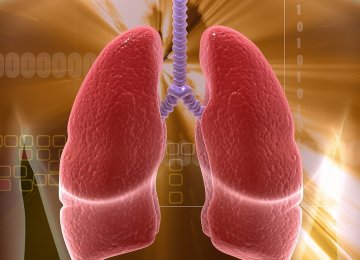Iran has managed to import the rapid tuberculosis (TB) detection tool that enables diagnosis of the disease in less than two hours.
The instruments are currently in operation in four provinces, namely Tehran, Golestan, Kermanshah and Sistan-Baluchestan, IRNA reported.
“Other cities use alternative diagnostic methods, but more regions too will be equipped with the early detecting system,” said Mohammad Mehdi Guya, head of the Infectious Diseases Department at the Health Ministry.
In the past it took almost two months to diagnose TB infection. With the new instrument, ordinary as well as drug-resistant TB can be detected in the primary stage which enables timely treatment of vulnerable groups such as HIV positive patients and children.
Another achievement of the Health Ministry with regard to TB in the past few years has been the development of inpatient facilities.
Tehran’s Masih Daneshvari Hospital was the only medical center in the country with services for TB patients. Now TB wards have opened in hospitals of four other metropolises.
“TB sections in hospitals in Mashhad and Shiraz have been launched and Kermanshah and Tabriz will admit patients soon,” said the ministry official.
Prevalence in Iran
More than 10,200 TB patients were identified across the country during the fiscal year that ended in March 2016. Studies for the past year have not been completed, but available data show a minor decline with 8,940 reported cases.
Out of this number, 52% are men, 48% women, and 13% foreign nationals. It is reported that 3.8% of the patients are simultaneously infected with HIV.
According to observations, around half of the TB patients are infected with the pulmonary TB which is contagious. The largest number of infections was found in Sistan-Baluchestan and Golestan provinces.
“Except Turkey, most of Iran’s neighbors are among TB high burden countries while the incidence of the disease in Iran in the past year was among the lowest compared with eastern Mediterranean countries,” said Guya.
Treatment and medicine is offered to tubercular people free of charge. Healthcare providers visit patients’ homes on a daily basis to administer the drugs.
However, the process often falls short for foreign nationals (many of whom are Afghan refugees) because they normally move out of the vicinity of healthcare providers during their treatment.
“The intermissions cause failure or extension of the treatment process or the development of the microorganisms into drug-resistant bacteria which are much harder to suppress,” said the official.
Ordinary TB can be treated within six months with outpatient help while the drug-resistant type takes at least six months in the hospital and at least two years to be completely cured. Almost half of the patients infected with the resistant type die because of the disease.
Global Data
Tuberculosis is an infectious disease which generally affects the lungs, but can also affect other parts of the body including the pleura, the central nervous system, the lymphatic system, the genitourinary system, and the bones and joints among others. Pulmonary TB is the most contagious type of the illness.
Tuberculosis is spread through the air when people who have active TB in their lungs cough, spit, speak, or sneeze. These people are capable of infecting between 12 and 15 other people per year.
One third of the world’s population is infected with TB. In 2015, 10.4 million people around the world including one million children became sick with TB disease. Around 480,000 of them developed a drug-resistant infection. There were 1.8 million TB-related deaths worldwide in that year.
The infection is a leading killer of people who are HIV infected. About 35% of HIV infected people lose their lives due to TB infection. In 2015, out of 2.5 million detected HIV cases, 1.2 million had developed Tuberculosis.
Smoking is another major risk factor. Those who smoke cigarettes have nearly twice the risk of TB compared to nonsmokers. 20% of the patients worldwide are tobacco users.
About 95% of TB incidents occur in developing countries and only 5% in developed states. India, Indonesia, China, Nigeria, Pakistan, and South Africa home 60% of the infections.






Add new comment
Read our comment policy before posting your viewpoints